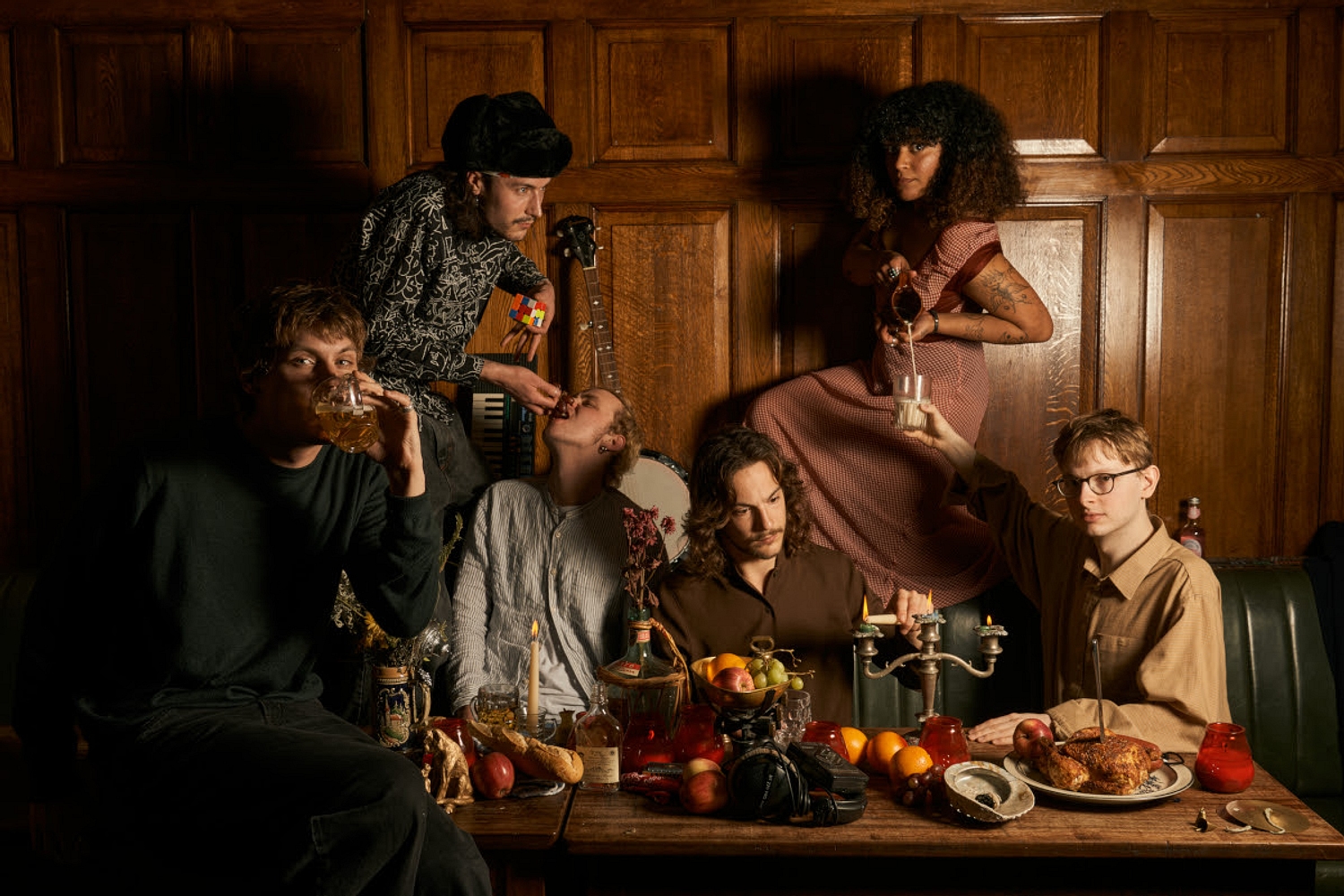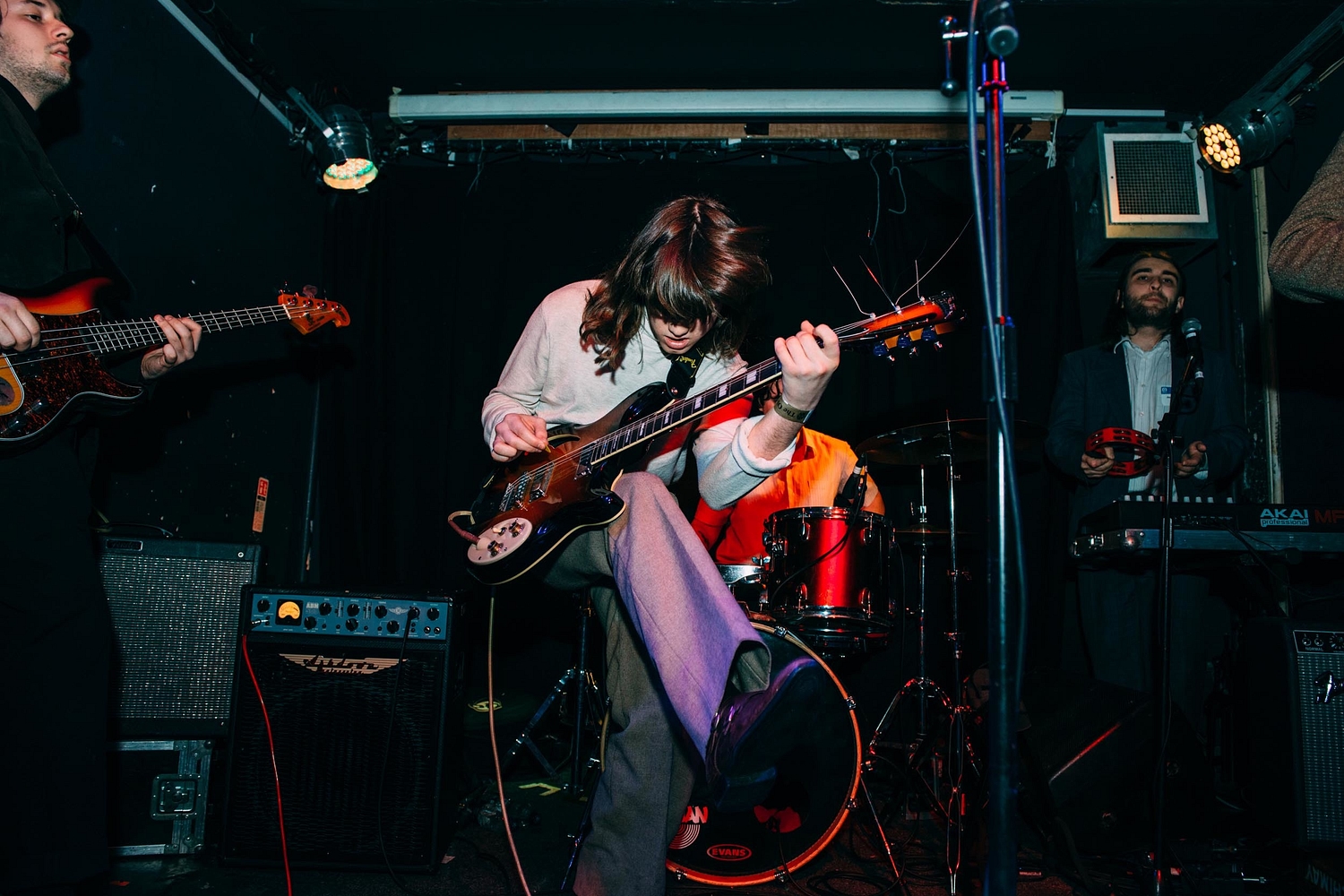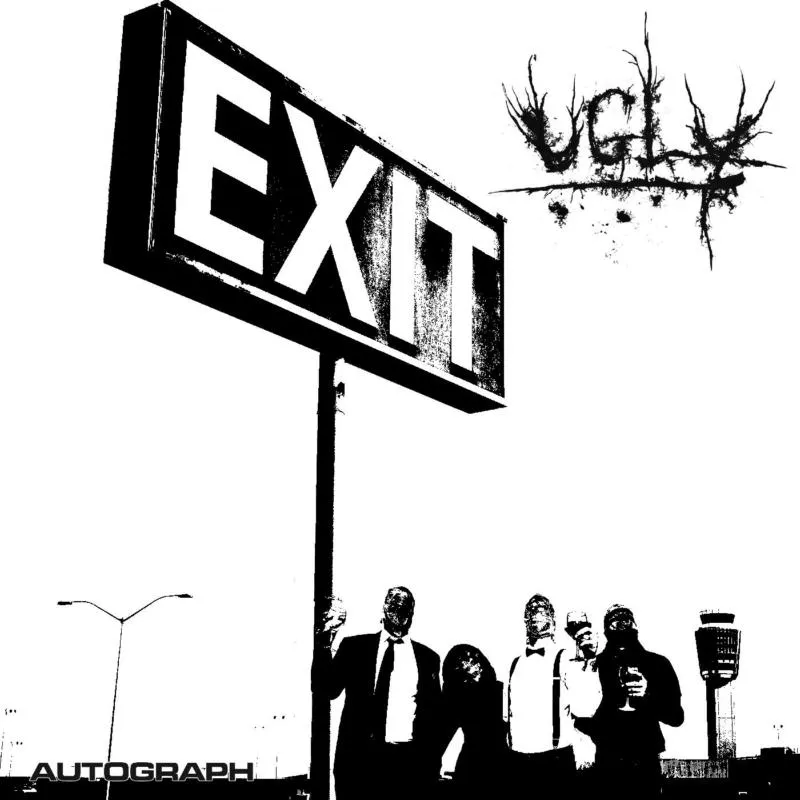
Neu Ugly: “We were curious to see how far our interest in ritual performance could be stretched into something resembling ‘song’”
The Cambridge six-piece share a track-by-track guide to their anticipated debut EP, ‘Twice Around The Sun’.
They may have been a name on tastemaker’s lips for little while now, but Cambridge six-piece Ugly continue to defy definition, pushing both themselves and any genre-imposed compositional boundaries to create music that is immersive, deeply evocative, and movingly communal in its sensibilities. Their hot-off-the-press debut EP ‘Twice Around The Sun’ (released independently yesterday, 3rd April) is a collection that acts as something of a timestamp of the band’s past two years, taking in a vast array of influences - from prog and post-rock to jazz and choral music - that coalesce into a mesmeric exploration of the folkloric pastoral, delivered via the medium of intricately layered instrumentation and rousing ecclesiastical harmonies.
‘Twice Around The Sun’ is a testament to their story so far and an intriguing introduction to the twists and turns they’re yet to take; ahead of hitting the road on a headline tour of the UK this month, Ugly give us an insight into the inspirations, emotions, and intentions behind each of the EP’s six tracks.
The Wheel
'The Wheel' is our opener, mood-setter, and probably the most sprawling track on the EP, moving through a polyphonic vocal canon, a raucous middle section, and an extended outro that we can’t deny is at least a little bit inspired by [Fleetwood Mac's] 'The Chain'. We liked the idea of having these sinister, sickly sweet vocals as the needle drop, a kind of uneasy calm before the chaos of the rest of the track. With the refrains of “Wide, wide world” and “I will lay the wreath around you, in golden hay”, we wanted to build an image of a grand, pastoral landscape, but also zoom in on some characters and rituals we could imagine within it. When we play it live, we all come to the front and sing the canon together - in those moments it feels a bit like being characters in that world, one of many far-flung cults or sects performing a strange rite of our own. (Theo)
Sha
'Sha', like the majority of these songs, started off as a jam session during one of our rehearsals back in early 2021. I remember it being around late Feb/early March, and I’d seen a video of Herbie Hancock discussing his experience with Nichiren Buddhism. He spoke about his first experience hearing the chant ‘Nam Myoho Renge Kyo’ in the 70s, having been introduced by bassist Buster Williams. The chant translates to “Devotion to the Mystic Law of the Lotus Sutra" and essentially enables us all to manifest and embrace a Buddha-like nature, as well as unlocking our creative potential within our lives. When writing the lyrics, I made a conscious decision to add the chant; this was both for myself and for the listener to feel the power of the chant via the song. The song is supposed to feel uplifting, fresh, and spring-like, and the story, although lacking any definitive narrative, has the feeling of being on a journey and feeling assured on your path after a period of struggle or confusion. Using the word ‘Sha’ itself didn’t have much meaning, although it seamlessly allowed us to introduce the recurring ‘shut up’ line as an affirmation of ignoring negative thoughts or ideals within our consciousness, breaking negative past patterns, and instead living our lives authentically, freely, and abundant in creativity. (Jasmine)
Icy Windy Sky
‘Windy’ constitutes a challenge, in two parts. The first belonged to us: we were curious to see how far our interest in ritual performance could be stretched into something resembling ‘song’, and whether the initial influence would hold against the limitations of the imposed form. It turned out that there had to be a negotiation at every juncture. There was a time, for instance, where we dabbled in a little group-led glossolalia, in the hope of stripping away some of the trappings of lyrical intention; but of course, the thing has to be recorded, at which point those instinctive utterances will crystallize - it can’t be helped - and you are left with the painful task of selecting from your store what seems to you to be the most meaningful lot of nonsense. ‘Adaima, adafra’, etc., are the ghostly traces of that once-alive process, and they signal the place where the song’s challenge is passed over to the listener. It’s like this: will you allow for the way that the hardness of a composition can suggest the energy that pressed it into shape? Will you unravel what has been tied up in making this a finished thing? (Tom)
Shepherd's Carol
'Shepherd’s Carol' was a funny one in terms of its conception. A few years back in my old bedroom, Harry, Tom and I wrote a very long and winding foundation of what would eventually become the song. The instrumental evoked spritely frolicking images of the English countryside. The lyrics came shortly after, and naturally swayed towards these kind of scenes. As is often the way with the band, we would come up with some things that made us laugh and they eventually made their way into the final cut. It’s a fun but challenging one to play live, taking some inspiration from bands like Journey - it’s understandable why it’s led us towards the Glee comparison, we’re leaning into it! (Sam)
Hands of Man
As the penultimate track on the record, 'Hands of Man' offers moments of tranquility and reflection before a vocal harmonic eruption. The song first found form in some of the band’s earliest years; it was revived around 12 months ago, and has since taken on a new lease of life, one that affirms the direction that our music has taken and our ability to fuse each member’s individuality. Sam’s vocals are honest and tender, the subdued nature of the verses give way to the chorus as the instruments drop out to enforce the pathos of the lyrics. To me, the song evokes memories of friendships, love and warmth. Yet those memories’ very distance from today induces a paradoxical atmosphere of sadness, isolation and loss. This state of tension reaches its climax through the euphoria of the vocals in the outro - an appropriate precursor to the E.P’s finale. (Harrison)
I'm Happy You're Here
'I’m Happy You’re Here' is the last track on the EP, but it was the first of the EP singles that we wrote and released as a band under the current formation. This was during the tail end of lockdown, which was a time of upheaval and refinement for Ugly. It was one of the first songs that we really wrote as a whole band, and I think it shows; it combines elements of different music that we all like in quite a heavy handed, but naive and sweet way. The lyrics offer sentimental but vague imagery, and provide a sort of happy/sad feeling which I quite like - I hold [these lyrics] very near and dear.
'I’m Happy You’re Here' was recorded at the university where me and our superstar producer Balazs Altsach were studying at the time, meaning the quality is perhaps a little compromised compared to some of the other tracks on the EP. But again, I think this (hopefully) compliments or highlights the naive and fragile elements of the song. During the recording process we experimented with a lot of odd/atmospheric sounds (most of which involved running around a room screaming) - this was pivotal in putting ‘IHYH’ in this nostalgic, melancholic and eerie world. Also, this track would never have been complete without the face melting sax solo from the one and only Chris Adsett, so a big shout out to him for that! (Sam)
'Twice Around The Sun' is out now, and you can get tickets to Ugly's UK tour here.
Read More

The Neu Bulletin (Hope Tala, Cardinals, Soft Launch, and more!)
DIY's essential guide to the best new music.
5th April 2024, 3:00pm

The Neu Bulletin (King Isis, Been Stellar, Kaeto and more!)
DIY's essential guide to the best new music.
1st March 2024, 1:00pm

Get to know… UGLY
These Cambridge lads make jangly, good-time guitar music.
21st March 2019, 12:00am

FUR, Caro, Ugly and Talk Show bring diverse guitar kicks to night three of Hello 2019
Four “indie” bands; four very different offerings.
23rd January 2019, 12:00am
With Bob Vylan, St Vincent, girl in red, Lizzy McAlpine and more.

